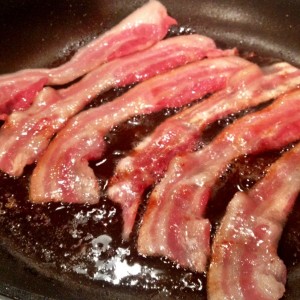 Today, I’m putting a post by a friend of mine, Kimberlie Martin (www.kimberliemartin.com), a functional rehabilitation, nutrition and exercise biochemistry specialist. In other words, she’s really freakin’ smart. Below, she brings back the debate on whether or not the Atkin’s Diet is worthwhile and more importantly, whether the principles of the diet work. I think you guys and girls will enjoy this. For the record, I do agree with her fully on her stance…
Today, I’m putting a post by a friend of mine, Kimberlie Martin (www.kimberliemartin.com), a functional rehabilitation, nutrition and exercise biochemistry specialist. In other words, she’s really freakin’ smart. Below, she brings back the debate on whether or not the Atkin’s Diet is worthwhile and more importantly, whether the principles of the diet work. I think you guys and girls will enjoy this. For the record, I do agree with her fully on her stance…
Pro’s & Con’s of the Atkins Diet-Ketosis Revisited – Kimberlie Martin
As some of you may have heard from your RD or internal medicine physician, the Atkins Diet is a “bunch of malarky” (in the words of my granny). What exactly is the Atkins approach to fat loss, what is so terrible about it, and are there any alternatives? First and foremost, it is a low-carbohydrate approach to weight loss and according to professionals your cholesterol will skyrocket and your fat levels will be through the roof. A typical Atkins plan puts one on an induction phase of strictly proteins and cheeses, and then a maintenance phase of other foods without direct carbohydrate sources. What exactly is a carb? Anything that is made up of glucose, grain, and sometimes fiber. Romaine lettuce is surprisingly a carb, carrots are carbs, and even milk is a carb! Now has your doctor ever told you what cholesterol is? It is a waxy substance made up of lipoproteins that can stick to the walls of our arteries causing a build up of plaque. What Dr. Atkins fails to tell us is that exercise is also crucial to maintaining a great physique-which can also lower our bad cholesterol and increase our HDL, or good cholesterol, levels.
A study done in 2005 showed that following a long term low carbohydrate diet actually significantly decreased LDL levels, blood triglyceride levels, blood glucose levels, and significantly increased HDL levels along with significant weight loss. The foods the researchers relied on during the study were proteins ranging from tuna and sausage to chicken and full fat eggs/cheeses. There are various ways to modify a ketogenic diet to limit the amount of fats present, but if you take note that the breakdown of proteins is ~40% glucose, higher fats are needed to indeed stay in a state of ketosis. Each meal of 6 per day should include a protein and a fat, preferably one lower in saturated fats. According to a website,www.AtkinsExposed.org, “The warnings from medical authorities continue to this day. “People need to wake up to the reality,” former U.S. Surgeon General C. Everett Koop writes, that the Atkins Diet is “unhealthy and can be dangerous.””. However there is no detailed information regarding this unhealthy and dangerous claim, especially after looking at the above mentioned study.
I am not necessarily an advocate of Atkins himself, but rather ketogenic diets as an effective weight loss method. Atkins fails to suggest monitoring fats and combining certain ones. However, one of the frontrunners of ketogenic dieting in the sport of bodybuilding touches on this well, Dave Palumbo (www.davepalumbo.com, one of Dr Banks’ trusted trainers/diet experts). He makes it known to, first and foremost, cut the cheese. Cheese is a source of protein, yes, but it is so high in bad fats and calories per ounce. Talk about calorie dense! Per ONE ounce of normal fat cheese(approximately the size of 3 stacked dice) it would take the average 150lb person 15 minutes of running to burn it off! At 9.3g of fat, 5.9 of it saturated, and 7g of protein.per ounce, one could substitute 4 egg whites and a sugar free jello for 1/3 less calories and a satiating meal, along with 17g of protein instead of 7! A handful of almonds can also be added for a healthy addition, with plenty of fiber and polyunsaturated fats.
Are you scared of your blood becoming acidic since your doctor said this is such a dangerous part of Ketosis? Well if you have diabetes, he is correct. You will not be producing insulin, allowing your blood to become thick and viscous due to a build up of both glucose and because of the low carbs, ketones. Normal people have insulin available to compensate for this mechanism, which is normally not mentioned. Fats become broken down into ketone bodies to provide energy and also some proteins do as well-however there is some glucose formed from gluconeogenesis of proteins available despite what you may have heard otherwise.
So, do we or don’t we use a ketosis diet? I believe it is a fantastic method, and when used properly, can be a highly effective way to get your body to metabolize fat. But let’s skip the cheese and bacon grease, and instead use some common sense.
___________________________________________
Until next time,
-Dr. Craig